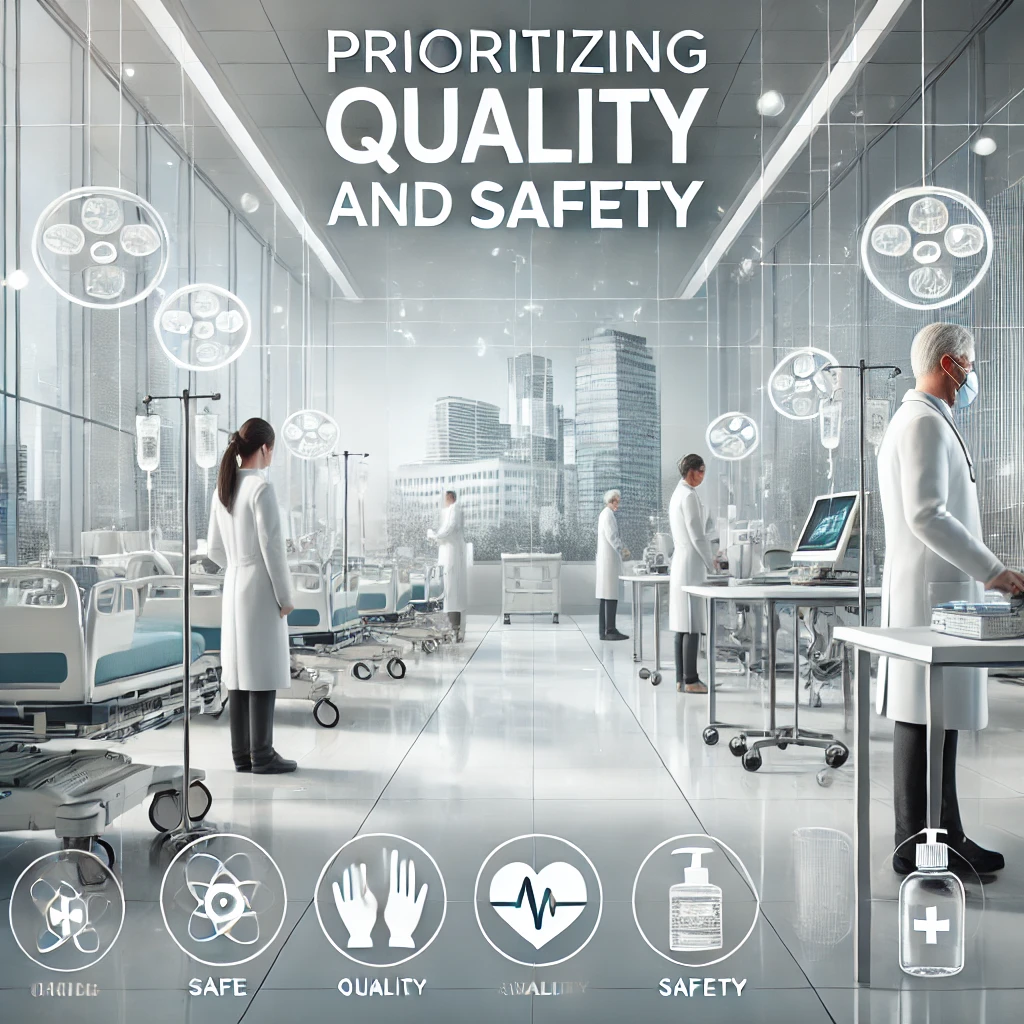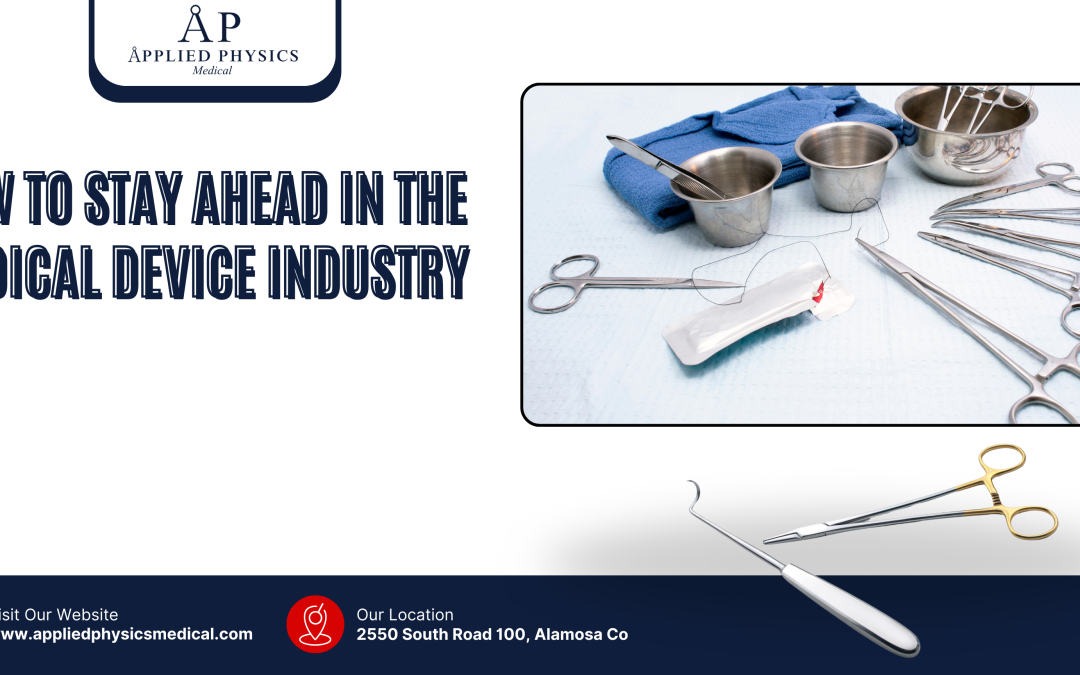Introduction
In the fast-paced world of the medical device industry, staying ahead means embracing technological advancements. From advanced materials to cutting-edge manufacturing processes, technology is constantly evolving and revolutionizing the way medical devices are designed, produced, and used. Companies that are able to adapt and integrate these advancements into their products will have a competitive edge in the market.
One way to stay ahead in the medical device industry is to invest in research and development of new technologies. This could involve exploring new materials that are more durable and biocompatible, or developing innovative manufacturing techniques that improve efficiency and reduce costs. Additionally, companies can also look into incorporating digital health technologies, such as wearable devices and telemedicine platforms, into their product offerings.
By staying at the forefront of technological advancements, companies can ensure that their products remain relevant and in demand in the ever-changing healthcare landscape. Another important aspect of embracing technological advancements is staying abreast of the latest regulatory requirements. As new technologies emerge, regulatory bodies often need to update their guidelines to ensure the safety and efficacy of medical devices.
Companies must be proactive in understanding and complying with these regulations to avoid delays in product development and market access. By staying ahead of the curve in terms of technology and regulation, companies can position themselves as leaders in the industry and gain a competitive advantage.
Key Takeaways
- Embracing technological advancements is crucial for staying ahead in the medical device industry, as it allows for innovation and improved patient outcomes.
- Adapting to regulatory changes is essential to ensure compliance and maintain a competitive edge in the market.
- Investing in research and development is key to driving innovation and staying ahead of the competition in the medical device industry.
- Fostering collaboration and partnerships with other industry players can lead to new opportunities and advancements in the medical device field.
- Prioritizing quality and safety is non-negotiable in the medical device industry, as it directly impacts patient well-being and market success.
Adapting to Regulatory Changes
In the medical device industry, regulatory changes are a constant reality. From new guidelines for product testing to updated requirements for market approval, companies must be able to adapt quickly to these changes to stay ahead. This requires a proactive approach to monitoring regulatory developments and a willingness to invest in compliance efforts.
One way to adapt to regulatory changes is to prioritize a strong quality management system. By implementing robust processes for product development, testing, and documentation, companies can ensure that they are well-prepared to meet any new regulatory requirements that may arise. Additionally, investing in training and education for employees on regulatory compliance can help ensure that everyone in the organization is aligned with the latest standards.
Another important aspect of adapting to regulatory changes is maintaining open lines of communication with regulatory authorities. By proactively engaging with these agencies, companies can stay informed about upcoming changes and provide input on how these changes may impact their operations. This can help companies anticipate and prepare for regulatory changes, rather than being caught off guard by sudden shifts in requirements.
Overall, adapting to regulatory changes requires a proactive and flexible approach. Companies that can stay ahead of the curve in terms of compliance will be better positioned to navigate the complex regulatory landscape and maintain a competitive edge in the market.
Investing in Research and Development
Investing in research and development (R&D) is crucial for staying ahead in the medical device industry. R&D allows companies to innovate and develop new products that meet the evolving needs of healthcare providers and patients. By investing in R&D, companies can differentiate themselves from competitors, improve patient outcomes, and drive growth in the market.
One way to invest in R&D is to focus on developing breakthrough technologies that address unmet medical needs. This could involve exploring new treatment modalities, developing novel diagnostic tools, or creating innovative devices that improve patient comfort and convenience. By prioritizing R&D in these areas, companies can position themselves as leaders in their respective fields and gain a competitive advantage.
Additionally, investing in R&D can also involve exploring nw markets and expanding product lines. This could include conducting market research to identify emerging trends and consumer needs, as well as developing products that cater to these demands. By investing in R&D to expand into new markets, companies can diversify their revenue streams and reduce their reliance on any single product or market segment.
Overall, investing in R&D is essential for staying ahead in the medical device industry. By continuously innovating and developing new products, companies can maintain a competitive edge and drive growth in the market.
Fostering Collaboration and Partnerships
| Metrics | Key Points |
|---|---|
| Regulatory Compliance | Stay updated with FDA regulations and international standards |
| Technological Innovation | Invest in R&D for new technologies and product improvements |
| Market Analysis | Understand market trends and customer needs |
| Quality Management | Implement robust quality control processes |
| Competitive Landscape | Monitor competitors and differentiate your products |
In the highly complex and interconnected world of the medical device industry, fostering collaboration and partnerships is essential for staying ahead. By working with other companies, healthcare providers, research institutions, and regulatory bodies, companies can gain access to new resources, expertise, and opportunities that can help drive innovation and growth. One way to foster collaboration and partnerships is to engage with healthcare providers early in the product development process.
By seeking input from clinicians and other healthcare professionals, companies can ensure that their products are designed to meet the specific needs of end users. Additionally, collaborating with healthcare providers can also help companies gain valuable insights into emerging trends and unmet needs in the market. Another important aspect of fostering collaboration and partnerships is working with research institutions and academic centers.
By partnering with these organizations, companies can gain access to cutting-edge research and expertise that can help drive innovation in product development. Additionally, collaborating with research institutions can also help companies stay abreast of the latest scientific advancements and emerging technologies. Overall, fostering collaboration and partnerships is crucial for staying ahead in the medical device industry.
By working with other organizations and stakeholders, companies can gain access to new resources and expertise that can help drive innovation and growth.
Prioritizing Quality and Safety

In the medical device industry, prioritizing quality and safety is paramount for staying ahead. With patient lives at stake, companies must ensure that their products are safe, effective, and reliable. By prioritizing quality and safety, companies can build trust with healthcare providers and patients, differentiate themselves from competitors, and avoid costly recalls or legal issues.
One way to prioritize quality and safety is to implement a strong quality management system (QMS). This involves establishing robust processes for product design, testing, manufacturing, and post-market surveillance to ensure that products meet the highest standards of quality and safety. Additionally, investing in employee training on quality management can help ensure that everyone in the organization is aligned with best practices for ensuring product quality.
Another important aspect of prioritizing quality and safety is conducting thorough risk assessments throughout the product lifecycle. This involves identifying potential hazards associated with a product, evaluating the severity of these hazards, and implementing measures to mitigate or eliminate them. By prioritizing risk management, companies can ensure that their products are safe for use by healthcare providers and patients.
Overall, prioritizing quality and safety is essential for staying ahead in the medical device industry. By ensuring that products meet the highest standards of quality and safety, companies can build trust with stakeholders and maintain a competitive edge in the market.
Understanding Market Trends and Consumer Needs
Staying ahead in the medical device industry requires a deep understanding of market trends and consumer needs. By staying abreast of emerging trends and anticipating future demands, companies can develop products that meet the evolving needs of healthcare providers and patients. One way to understand market trends and consumer needs is to conduct thorough market research.
This involves analyzing market size, growth rates, competitive landscape, and consumer preferences to identify opportunities for growth and innovation. Additionally, engaging with key opinion leaders and healthcare providers can provide valuable insights into emerging trends and unmet needs in the market. Another important aspect of understanding market trends and consumer needs is leveraging digital health technologies to gather real-time data on product usage and patient outcomes.
By collecting data from connected devices and digital health platforms, companies can gain valuable insights into how their products are being used in real-world settings and identify opportunities for improvement. Understanding market trends and consumer needs is crucial for staying ahead in the medical device industry. By staying abreast of emerging trends and anticipating future demands, companies can develop products that meet the evolving needs of healthcare providers and patients.
Navigating Global Expansion and Market Access
In today’s globalized economy, navigating global expansion and market access is essential for staying ahead in the medical device industry. By expanding into new markets and gaining access to international customers, companies can diversify their revenue streams, reduce their reliance on any single market segment, and drive growth. One way to navigate global expansion is to conduct thorough market research to identify opportunities for growth in international markets.
This involves analyzing factors such as market size, growth rates, regulatory requirements, competitive landscape, and consumer preferences to identify potential expansion opportunities. Additionally, gaining market access in international markets often requires navigating complex regulatory requirements. Companies must proactively understand these requirements and invest in compliance efforts to ensure that their products meet the necessary standards for market approval.
Conclusion
Another important aspect of navigating global expansion is building strong partnerships with distributors, healthcare providers, and other stakeholders in international markets. By working with local partners who have expertise in navigating local regulations and cultural nuances, companies can gain access to new resources and opportunities that can help drive growth. Overall, navigating global expansion and market access is essential for staying ahead in the medical device industry.
By expanding into new markets and gaining access to international customers, companies can diversify their revenue streams, reduce their reliance on any single market segment, and drive growth.

